From the block to the slab: the working of natural stone
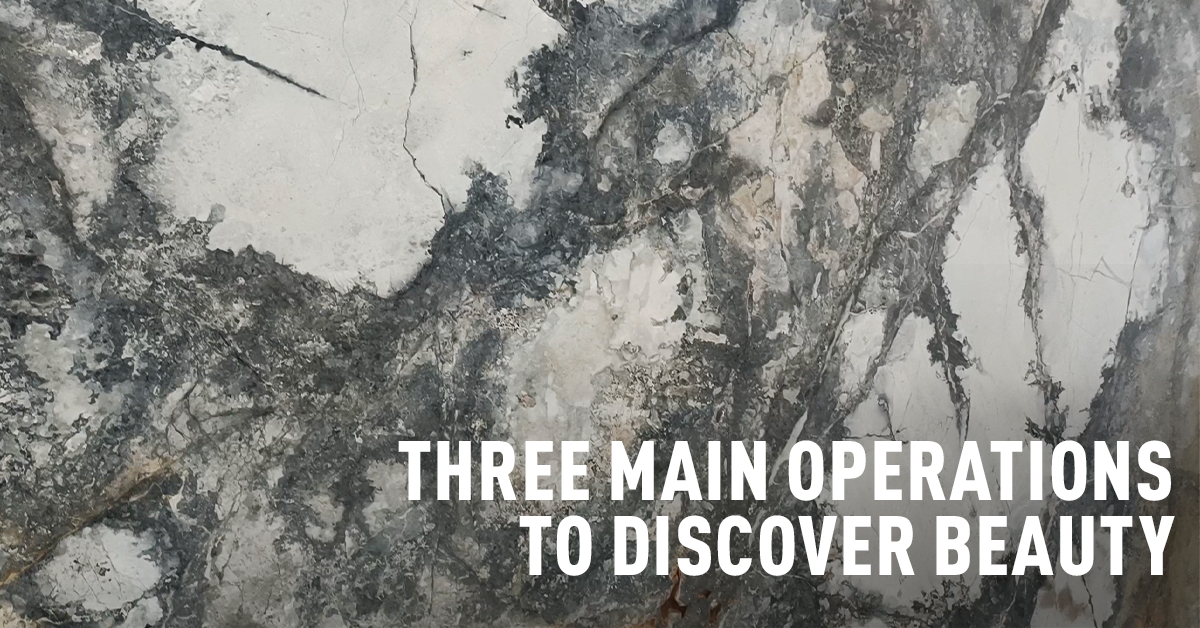
Each precious stone that now is used in a wonderful floor, a wall covering or a piece of furniture before this current form was a slab and before that a block.
The surfaces and tops in natural precious stone are characterized by an authentic and prestigious beauty. Materials, such as marble, have always been used in architecture and interior design. They are symbols of luxury interior design.
But how is it possible to obtain this final result? What are the processes required to obtain multiple slabs starting from a block?
The block is processed with three main operations: reinforcement, cutting and finishing. Before any process, each new block needs a careful first “inspection” to make sure that its shape is suitable for cutting.
It is necessary to verify that the block has a square shape otherwise it will not be able to balance itself during the cutting process and could cause the breaking of the slabs. Each process requires attention and follows specific rules.
After this first inspection, let’s see specifically what are the processes that are performed on the block to obtain the slabs.
The first process is the strengthening.
The reinforcement
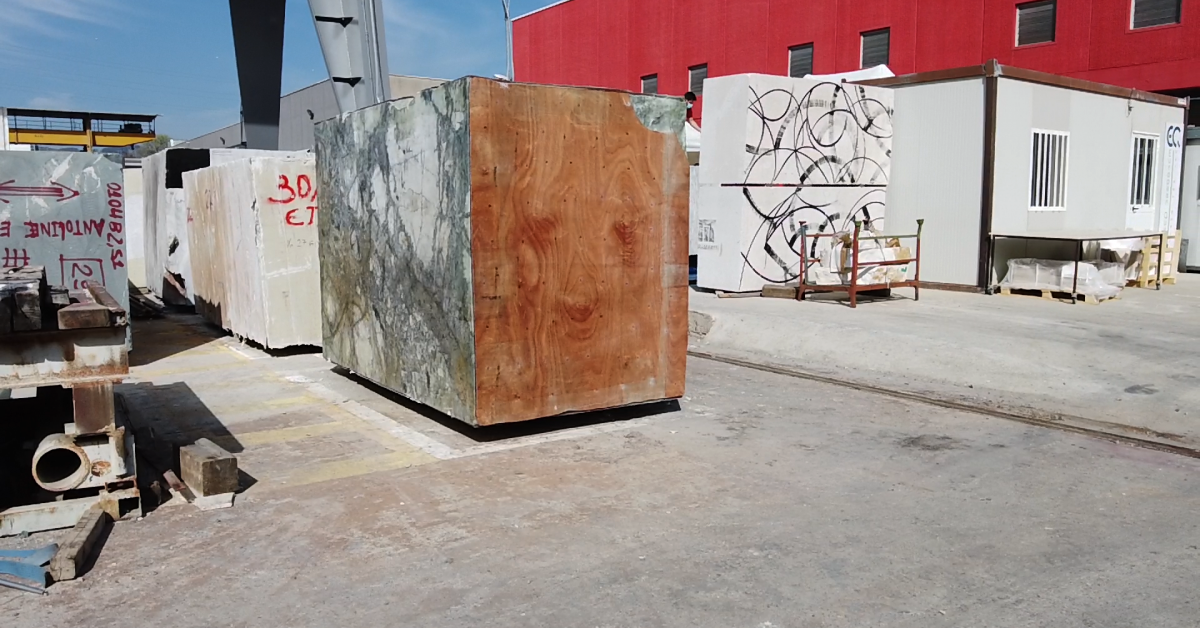
If the precious stone block shows defects the first process that takes place is the reinforcement. This step is fundamental because it reinforces the block in its weakest points, to ensure that the cutting process proceeds correctly and that the slabs do not have too many cracks. A special resin is used to fill and consolidate any crack and weak point in the block.
There are different strengthening techniques: the manual one, the light one, the strong one, the vacuum one, the one performed with panels and the one with alveolar mat. There is no fixed rule to establish which type of technique to implement: it depends on the block.
Then there is the cutting process, in which the stone block is cut to obtain the slabs.
Marble cutting
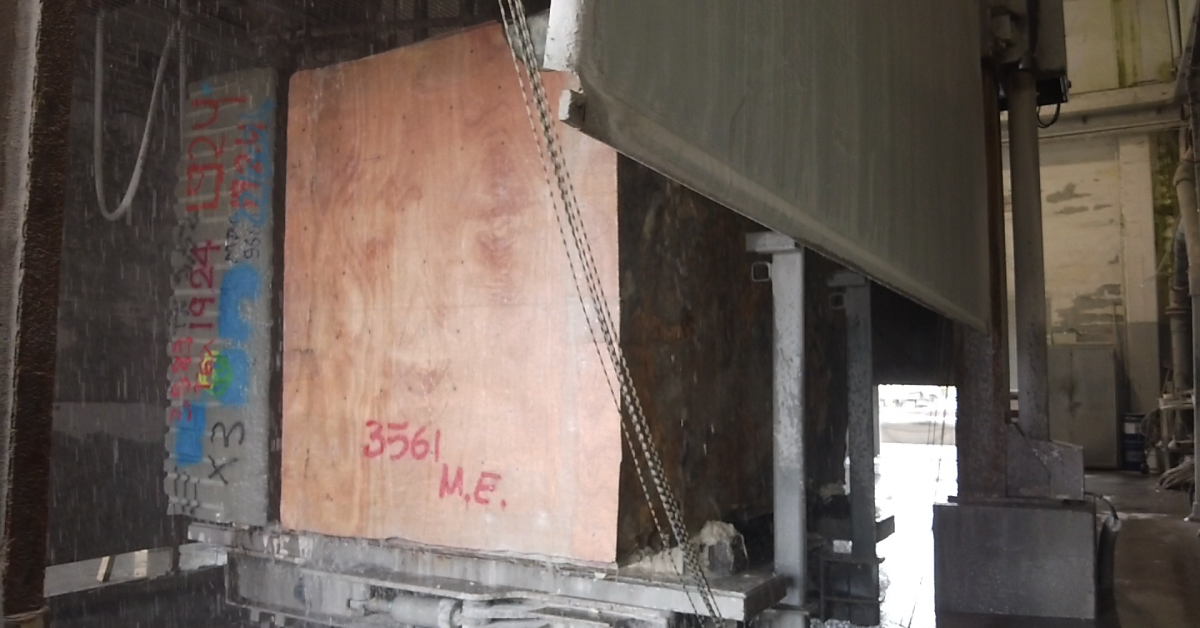
There are different cutting methods and machines: multi-wire, gangsaw, gangsaw with stainless steel blades or diamond blade gangsaw. The choice of the cutting method depends on the type of material. For example, marble is always cut with a gangsaw, white marble with stainless-steel blades, while quartzites and granites are cut with multi-wire. Multi-wire machines are used also with marbles that have very high hardness degree.
There are two different cutting techniques: vein cut and cross cut . With these different ways of cutting it is possible to obtain two slabs with a completely different and opposite look. In the case of a veined marble, the vein cut creates slabs with well-defined veins, while with the cross cut method the slabs have a cloudy appearance.
Each block can be cut according to the needs of the specific project and it is possible to obtain from the block slabs of different thickness, from one centimeter to a maximum of one meter, depending on the material.
Once the slabs have been cut, the third and last process starts: the finishing process.
The finishing process
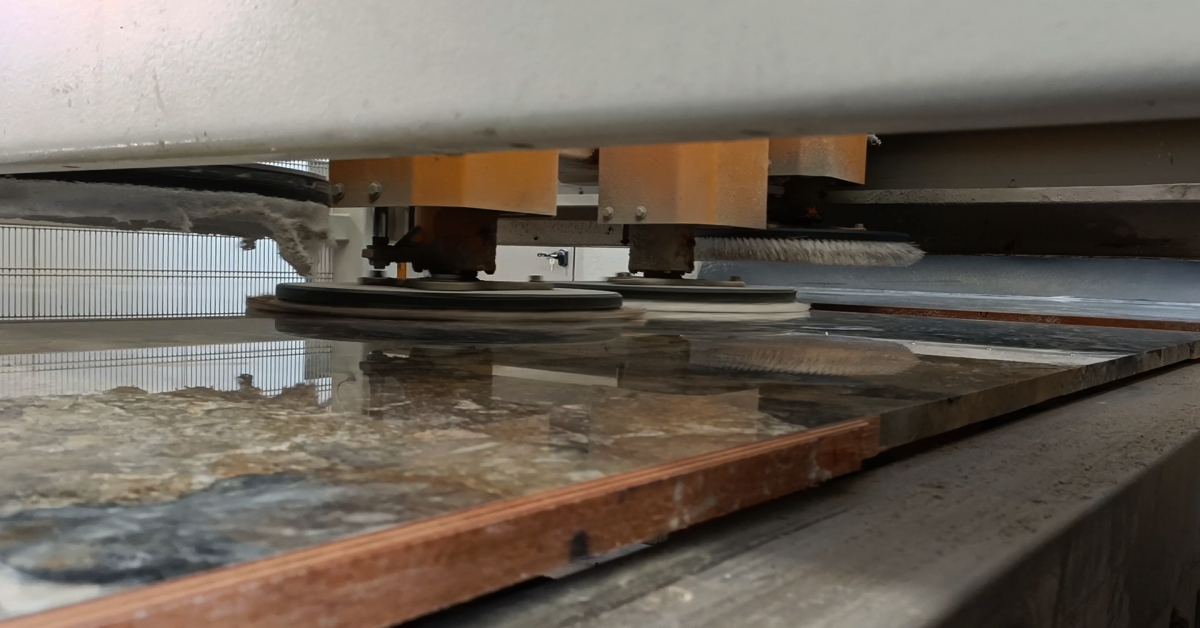
The finishing process is organized in several stages and it follows different paths, depending on the material and its condition.
The first step is the reinforcement, that makes the slabs more stable. In this process it is possible to use different materials such as meshes and plastic nets. These supports are glued to the back of the slab and make the material more resistant, to make sure that it is safe enough to be handled.
The second and the third steps depend on the characteristics of the material.
In the case of quartzites, it is necessary to examine the slabs. If there are cracks, we proceed with a resin polishing on the back of the slab and then with the smoothing and again with the resin polishing. If the material presents important issues, it is possible to resin the slab surface even three times, in order to ensure that it is free of surface defects. On the contrary, if the slab is in a good condition, we proceed with the polishing process.
If the material is marble, it is necessary to understand whether the slabs after the reinforcement need to be brought again to the raw state. At this stage, different processes can be carried out: it is possible to cover some imperfections with the acid-etching finish, or to treat them with protective products to improve the aesthetics aspect of the stone, or it is possible to move directly to the next process.
The fourth and last step is the finishing process, that depends on the customer’s request. The material can be polished, honed at different degrees, leathered at different degrees, bush-hammered, sanded, flamed, manufactured with a geometric pattern on the surface.
Once the finish process is over, we proceed with the application of the wax, which can be of different types based on the result we want to obtain, and of the nylon, that prevents the surface from being scratched in the future.
The result of these processes are large and fabulous slabs, with bright colors. They are large portions of beauty, ready to be used as natural material in the construction of new extraordinary spaces.
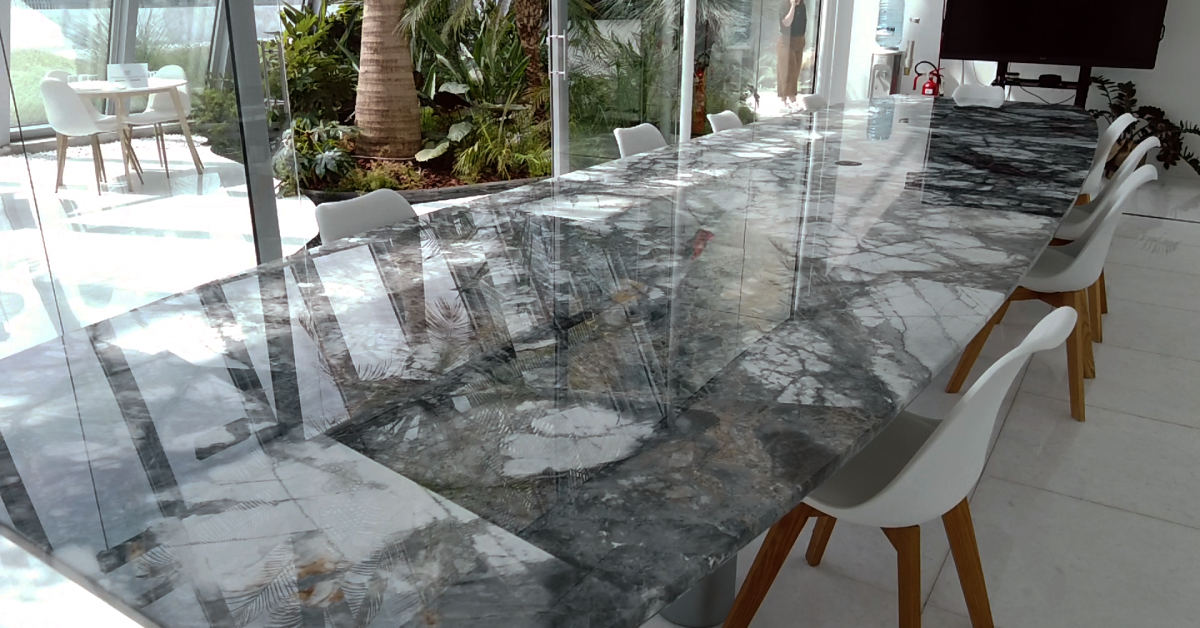
Do you want to find out more about our amazing materials?


No Comments